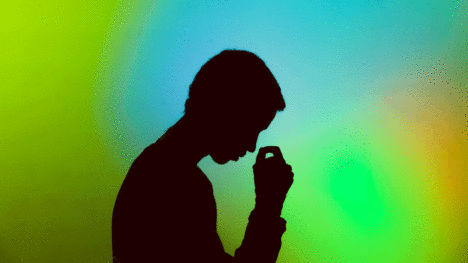Save our girls!
August 31, 2016

I want “better education regarding sex for both boys and girls [and] information about pornography, and the way it influences harmful sexual practices.”
These are the words of Lucy, aged 15, one of 600 young Australian women and girls who took part in a recently-released survey commissioned by Plan Australia and Our Watch. The survey, conducted by Ipsos, gathered responses from girls and young women aged 15–19 in all Australian states and territories. In the survey report, entitled Don’t Send Me That Pic, participants reported that online sexual abuse and harassment are endemic. More than 80 per cent said it was unacceptable for boyfriends to request naked images.
Sexual bullying and harassment are part of daily life for many girls. Young people are speaking out more and more about how these practices have links with pornography—and so they should, because they have the most to lose. Pornography is moulding and conditioning the sexual behaviours and attitudes of boys, and girls are being left without the resources to deal with these porn-saturated boys.
My own engagement with young women over the past few years in schools around the country confirms that we are experiencing a pornographic experiment on young people—an assault on their otherwise healthy sexual development.
If there are still any questions about whether porn has an impact on young people’s sexual attitudes and behaviours, perhaps it’s time to
listen to young people themselves. Girls and young women describe boys routinely pressuring them to provide acts inspired by the porn they consume. Girls tell of being expected to put up with things they don’t enjoy.
“Girls describe being ranked at school on their bodies and are sometimes compared to the bodies of porn stars.”
Some see sex only in terms of performance, where what counts most is the boy enjoying it. I asked a 15-year-old about her first sexual experience. She replied: “I think my body looked OK. He seemed to enjoy it.”
Many girls seem cut off from their own sense of pleasure or intimacy. That he enjoyed it is the main thing. Girls and young women are under a lot of pressure to grant boys and men what they desire, to adopt pornified roles and behaviours, with their bodies being merely sex aids. Growing up in a pornified landscape, girls learn that they are service stations for male gratification and pleasure.
“People debate about the impact of porn,” says Madeline, “but for my female friends and I, the impact is real. It’s our lives, it isn’t a theory or a fantasy, or even a disputed number in a statistic. Growing up in this culture, it feels as though my sexuality has been stolen by pornography.”
Girls are expected to provide sex acts for tokens of affection. A 15-year-old told me she didn’t enjoy sex at all, but that getting it out of the way quickly was the only way her boyfriend would settle down and watch a movie with her. I’m increasingly seeing Year 7 girls who seek help on what to do about requests for naked images, an almost daily occurrence for many. “How do I say ‘no’ without hurting his feelings?” girls ask.
As the Plan Australia/Our Watch report found, girls are tired of being pressured for images they don’t want to share, but they are resigned to how normal the practice has become. Boys will use the images as a form of currency, to swap and share and even to use to humiliate girls publicly.
Year 7 girls ask me questions about “bondage” and “S&M.” Many had seen the film, 50 Shades of Grey. They ask, if he wants to hit me, tie me up and stalk me, does that mean he loves me? Girls are putting up with demeaning and disrespectful behaviours, and thereby internalising pornography’s messages about their submissive role.
I meet girls who describe being groped in the schoolyard, girls routinely sexually harassed at school or on the school bus on the way home. They tell me boys act like they are entitled to girls’ bodies. Defenders of porn often say that it provides sex education. And it does: it teaches even very young boys that women and girls are always “up for it.” “No” in fact means yes or persuade me.
Girls describe being ranked at school on their bodies and are sometimes compared to the bodies of porn stars. They know they can’t compete, but that doesn’t stop them thinking they have to. Requests for labioplasty have tripled in a little over a decade among young women aged 15–24. Girls who don’t undergo porn-inspired “Brazilian” waxing are often considered ugly or ungroomed by boys as well as by other girls.
And worse, some girls even suffer physical injury from porn-inspired sexual acts. The director of a domestic violence centre wrote to me a couple of years ago about the increase in porn-related injuries to girls aged 14 and up, from acts including torture:
“In the past few years we have had a huge increase in intimate partner rape of women from 14 to 80. The biggest common denominator is consumption of porn by the offender. With offenders not able to differentiate between fantasy and reality, believing women are ‘up for it’ 24/7, ascribing to the myth that ‘no means yes,’ oblivious to injuries caused and never ever considering consent. We have seen a huge increase in deprivation of liberty, physical injuries, torture, drugging, filming and sharing footage without consent.”
The Australian Psychological Society estimates that adolescent boys are responsible for around 20 per cent of rapes of adult women and between 30 and 50 per cent of all reported sexual assaults of children. Emeritus Professor Freda Briggs recently argued that online pornography is turning children into copycat sexual predators—acting out on other children what they are seeing in porn.
A 2012 review of research on “The Impact of Internet Pornography on Adolescents” found that adolescent consumption of internet pornography was linked to attitudinal changes, including acceptance of male dominance and female submission as the primary sexual paradigm, with women viewed as “sexual playthings eager to fulfil male sexual desires.” The authors found that “adolescents who are intentionally exposed to violent sexually explicit material were six times more likely to be sexually aggressive than those who were not exposed.”
I have asked girls what messages they might like me to pass on to boys. So far, these messages include: “Stop commenting on our bodies,” “Stop demanding pictures,” “Rape jokes are never funny” and “Sex before the age of consent is illegal.”
The proliferation and globalisation of hypersexualised imagery and pornographic themes make healthy sexual exploration almost impossible. Sexual conquest and domination are untempered by the bounds of respect, intimacy and authentic human connection. Young people are not learning about intimacy, friendship and love, but about cruelty and humiliation. As a recent study found, “Online mainstream pornography overwhelmingly centred on acts of violence and degradation toward women, the sexual behaviours exemplified in pornography skew away from intimacy and tenderness and typify patriarchal constructions of masculinity and femininity.”
It is intimacy and tenderness that so many girls and young women say they are looking for. A young woman told me that on dating sites she lists under “fetish”: “wanting to stare longingly into someone’s eyes and to take sex slow.” She said if she didn’t put these desires in the “fetish” category, they wouldn’t warrant a second glance.
But how will young women find these sensual, slow-burn experiences in men indoctrinated by pornography? Psychologist Philip Zimbardo says of young men: “They don’t know the language of face to face contact. . . . Constant arousal, change, novelty excitement makes them out of sync with slow developing relationships—relationships which build slowly.”
It is wrong to leave sexual formation in the hands of the global sex industry. We need to do more to help young people stand up against warped notions of sexuality conveyed in pornography.
Fortunately, the ill-effects of the pornographic experiment on relationships and sexuality are being named out loud. A groundbreaking Australia-first symposium on the issue was recently held to a standing-room-only crowd and a current Senate inquiry is gathering evidence of the distorting harmful impacts of porn on our young people.
Most importantly, it’s young people themselves demanding change. Josie, 18, is quoted in the Plan Australia/Our Watch report: “We need some sort of crackdown on the violent pornography that is currently accessible to boys and men. This violent pornography should be illegal to make or view in Australia as we clearly have a problem with violence and boys are watching a lot of pornography which can be very violent. . . . This is influencing men’s attitudes towards women and what they think is acceptable. Violent pornography is infiltrating Australian relationships.”
Girls like Lucy and Josie deserve our response.
This article first appeared on the Opinion page of the ABC Religion and Ethics website.







